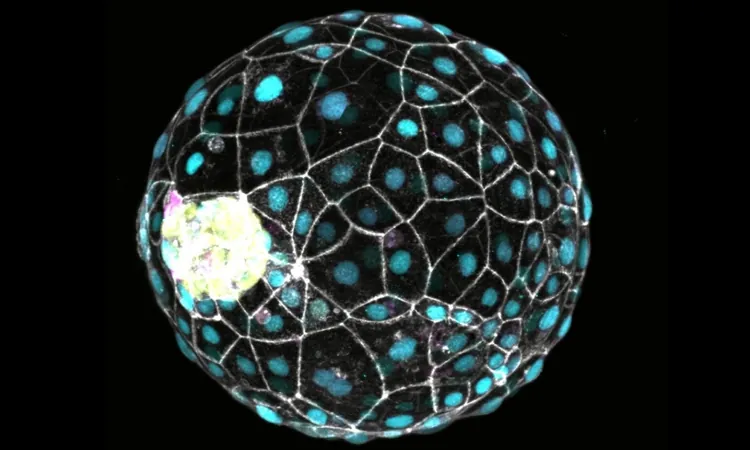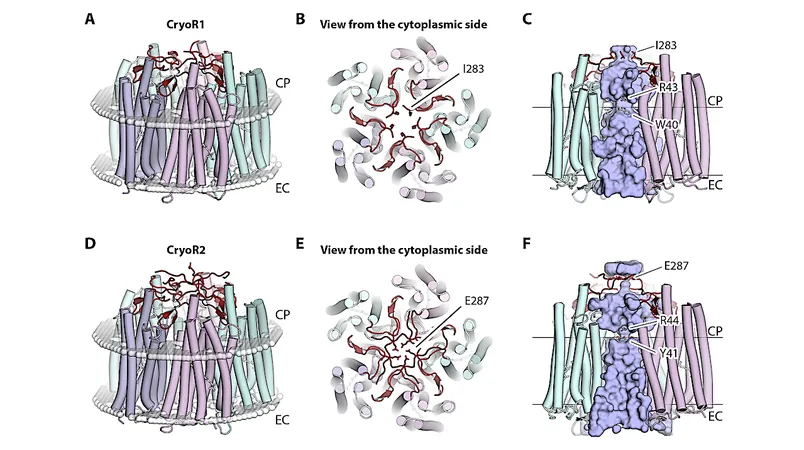
Scientists Discover ‘Pause Button’ in Human Development: A Groundbreaking Discovery!
2024-09-26
Author: Wei
In a revolutionary finding, scientists have revealed that humans may possess a hidden mechanism to temporarily halt embryonic development, much like certain mammals do through a phenomenon called embryonic diapause.
This mechanism allows embryos to pause their growth, enhancing survival prospects for both the embryo and the mother during critical periods.
Traditionally observed at the blastocyst stage right before implantation, diapause enables embryos to remain free-floating for extended durations until conditions are deemed favorable for further development.
A recent collaborative study led by researchers Aydan Bulut-Karslıoğlu from the Max Planck Institute for Molecular Genetics and Nicolas Rivron from the Institute of Molecular Biotechnology (IMBA) of the Austrian Academy of Sciences, published on September 26 in the journal Cell, uncovers that similar molecular processes that control diapause in mammals may also operate in human cells.
Stem Cell Insights: The Ethical Alternative
In an ethical twist, the researchers utilized human stem cells and scientifically engineered embryonic models known as blastoids rather than traditional human embryos for their experimental framework.
They focused on modulating the mTOR signaling pathway, a key contributor to growth regulation in embryonic development.
Their experiments showed that inhibiting mTOR activity in these models induced a dormant state analogous to diapause.
"The mTOR pathway is a major regulator of growth and developmental progression in mouse embryos," said Aydan Bulut-Karslıoğlu.
This discovery implies that human cells are equipped with the necessary machinery to initiate a diapause-like response when needed.
The dormant state they identified in human blastoids is characterized by reduced cell division, slowed development, and impeded attachment to the uterine lining.
Notably, this dormancy is not permanent; when the mTOR pathway is reactivated, the blastoids can resume normal developmental processes.
Implications for IVF and Reproductive Medicine
This fascinating research opens new horizons in reproductive medicine, particularly concerning in vitro fertilization (IVF) techniques.
The team suggests that harnessing this mechanism could significantly enhance embryo viability.
"By inducing a faster pace of development, we could increase the success rates of IVF," noted Rivron.
Conversely, prompting a dormant state during IVF could provide a critical opportunity to assess embryo health and synchronize developmental timing with the mother, thus improving implantation success rates.
Nicolas Rivron elaborates, "Though we may no longer utilize this inherent dormancy naturally, these findings suggest it remains within our biological repertoire."
This aligns with ongoing questions in developmental biology about how different species utilize similar or differing pathways to manage embryo development and implantation timing.
A Collaborative Leap for Future Research
The team's collaborative efforts highlight how interdisciplinary approaches can yield significant breakthroughs in understanding human development.
Heidar Heidari Khoei, a postdoctoral fellow involved in the research, emphasizes the importance of such partnerships in advancing scientific knowledge.
This discovery not only sheds light on our earliest development processes but also sets the stage for innovative avenues in reproductive health.
With these findings, researchers are poised to explore further the potential applications of this dormant state in enhancing reproductive strategies and addressing challenges in fertility treatments.
As science unfolds the intricate nuances of human development, the implications of these insights could revolutionize reproductive health practices worldwide.


 Brasil (PT)
Brasil (PT)
 Canada (EN)
Canada (EN)
 Chile (ES)
Chile (ES)
 Česko (CS)
Česko (CS)
 대한민국 (KO)
대한민국 (KO)
 España (ES)
España (ES)
 France (FR)
France (FR)
 Hong Kong (EN)
Hong Kong (EN)
 Italia (IT)
Italia (IT)
 日本 (JA)
日本 (JA)
 Magyarország (HU)
Magyarország (HU)
 Norge (NO)
Norge (NO)
 Polska (PL)
Polska (PL)
 Schweiz (DE)
Schweiz (DE)
 Singapore (EN)
Singapore (EN)
 Sverige (SV)
Sverige (SV)
 Suomi (FI)
Suomi (FI)
 Türkiye (TR)
Türkiye (TR)
 الإمارات العربية المتحدة (AR)
الإمارات العربية المتحدة (AR)